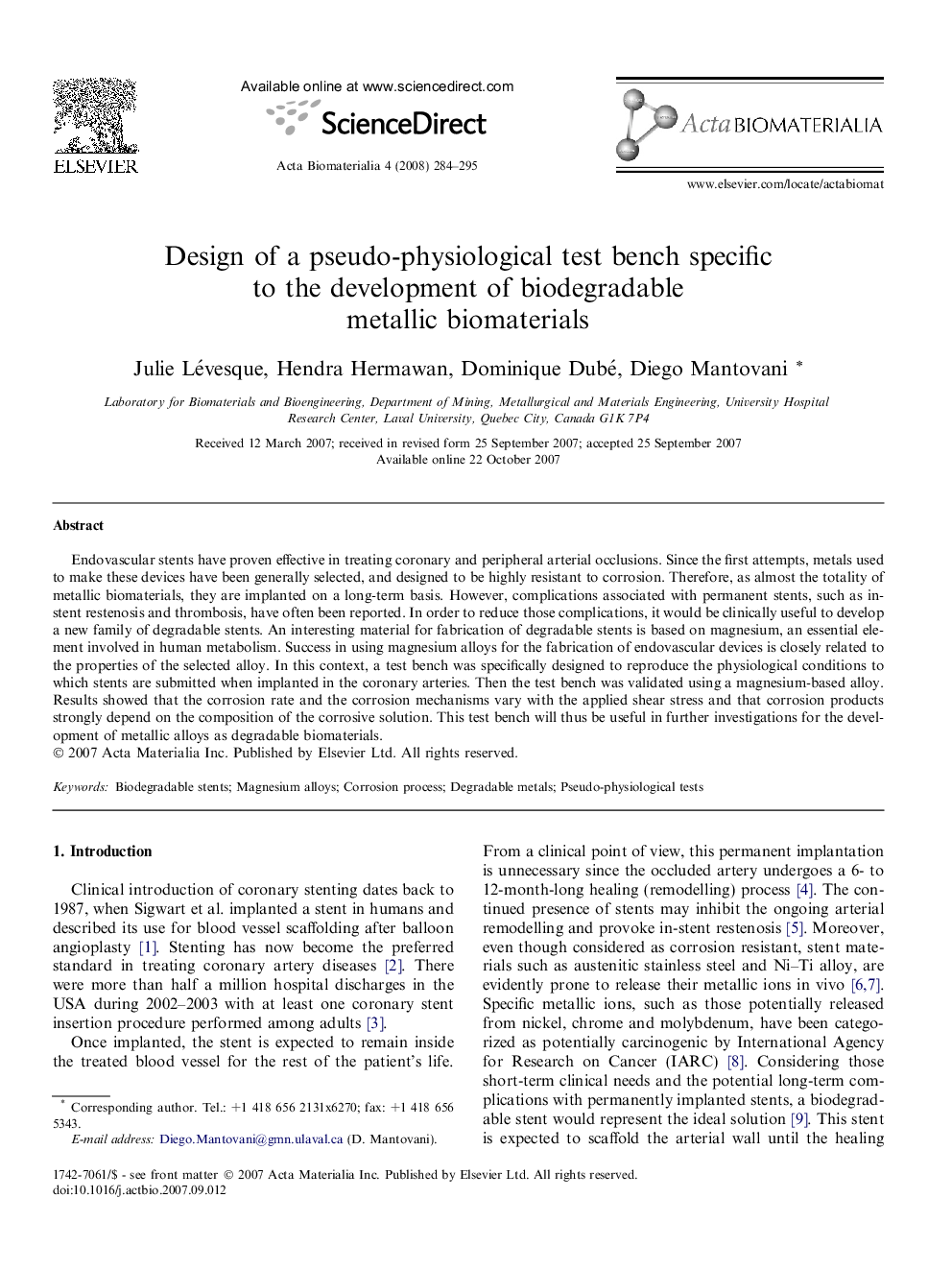| Article ID | Journal | Published Year | Pages | File Type |
|---|---|---|---|---|
| 1838 | Acta Biomaterialia | 2008 | 12 Pages |
Endovascular stents have proven effective in treating coronary and peripheral arterial occlusions. Since the first attempts, metals used to make these devices have been generally selected, and designed to be highly resistant to corrosion. Therefore, as almost the totality of metallic biomaterials, they are implanted on a long-term basis. However, complications associated with permanent stents, such as in-stent restenosis and thrombosis, have often been reported. In order to reduce those complications, it would be clinically useful to develop a new family of degradable stents. An interesting material for fabrication of degradable stents is based on magnesium, an essential element involved in human metabolism. Success in using magnesium alloys for the fabrication of endovascular devices is closely related to the properties of the selected alloy. In this context, a test bench was specifically designed to reproduce the physiological conditions to which stents are submitted when implanted in the coronary arteries. Then the test bench was validated using a magnesium-based alloy. Results showed that the corrosion rate and the corrosion mechanisms vary with the applied shear stress and that corrosion products strongly depend on the composition of the corrosive solution. This test bench will thus be useful in further investigations for the development of metallic alloys as degradable biomaterials.
